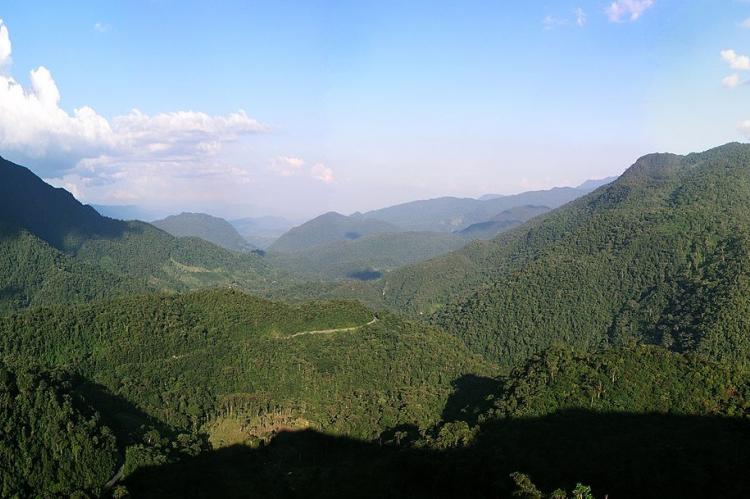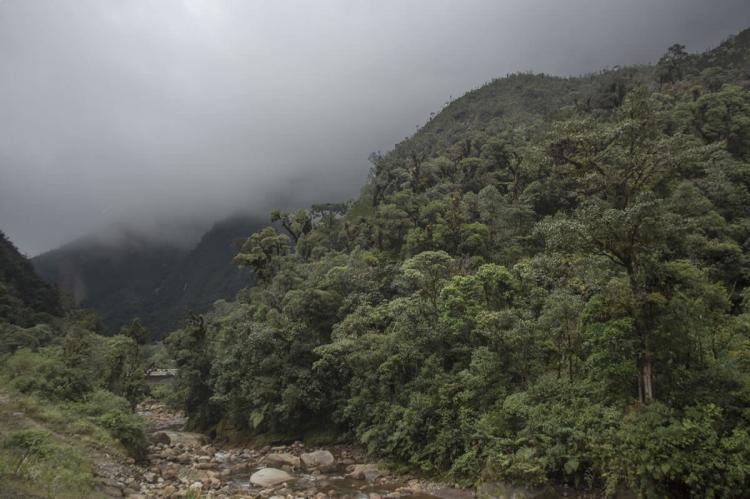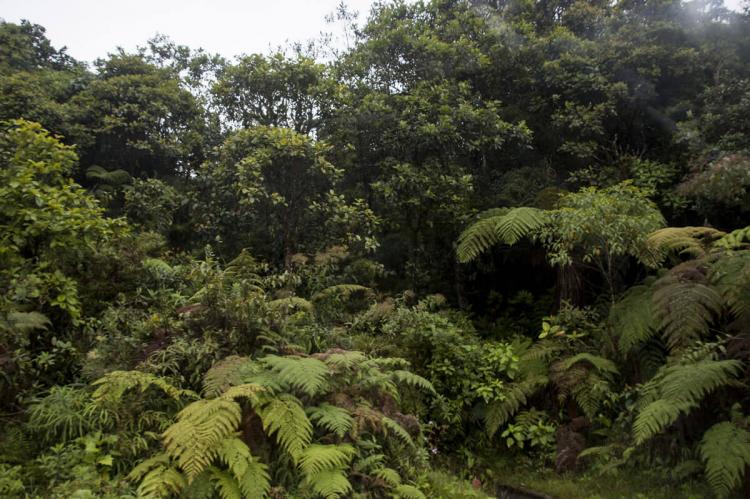The Alto Mayo Protection Forest: A Verdant Realm Safeguarding Peru's Biodiversity
Nestled in the northern reaches of Peru, the Alto Mayo Protection Forest is a verdant sanctuary spanning an impressive expanse within the San Martín region. This protected forestland is a vital bulwark, safeguarding a portion of the Peruvian Yungas ecoregion and the upper Mayo River basin.
The Alto Mayo Protection Forest: A Verdant Realm Safeguarding Peru's Biodiversity
Nestled in the northern reaches of Peru, the Alto Mayo Protection Forest is a verdant sanctuary spanning an impressive 182,000 hectares (450,000 acres) within the San Martín region. This protected forestland serves as a vital bulwark, safeguarding a portion of the Peruvian Yungas ecoregion and the upper Mayo River basin, shielding soil and water from the erosive impact of deforestation.
Geographical Significance
Situated in the eastern part of the Peruvian Andes, the Alto Mayo region unfolds its mountainous terrain with slopes exceeding 70% gradient in certain areas. Eleven main tributaries of the Mayo River originate within this protected expanse, underscoring its significance in maintaining the delicate ecological balance of the surrounding landscape. The Alto Mayo serves as the lifeblood for populations in the Mayo Valley, providing a vital water source for local communities.
Challenges and Threats
Despite its protected status, the Alto Mayo Forest has faced formidable challenges, including one of the highest deforestation rates in the country. Contributing factors such as insufficient enforcement of protective measures, the construction of a national highway traversing the forest, an influx of settlers, and unsustainable agricultural practices have taken a toll. In a cyclical pattern, depleted soil has increased deforestation as farmers seek to maintain production levels.
The primary threats facing this protected area include:
1. Illegal settlements by farmers engaging in agriculture
2. Extraction of wild orchids and animals for commercial purposes
3. Timber harvesting
4. Unsustainable fishing practices
Conservation Efforts
In response to these critical challenges, Conservation International, in collaboration with local communities, corporations, and the Peruvian government, has embarked on a mission to safeguard the Alto Mayo Forest. This collaborative effort aims to address the root causes of deforestation and promote sustainable land use practices that ensure the longevity of this vital ecosystem.
Community Engagement
Engaging local communities is crucial in ensuring the long-term success of conservation efforts. Programs focused on promoting sustainable agricultural practices, alternative livelihoods, and environmental education have been implemented to foster a sense of stewardship among the local population.
Corporate Responsibility
Partnering with corporations operating in the region, initiatives have been undertaken to promote responsible business practices and mitigate the environmental impact of commercial activities within the Alto Mayo Protection Forest.
Governmental Support
Collaborating with the Peruvian government, efforts have been made to strengthen the enforcement of protective measures, implement effective management strategies, and secure the necessary resources to preserve this vital ecosystem.
Biodiversity Hotspot
The Alto Mayo Protection Forest is home to a remarkable array of wildlife and flora, making it an immense biodiversity hotspot.
Wildlife
The forest serves as a haven for diverse species, including:
- Yellow-tailed woolly monkey
- Spectacled bear
- Cougar
- Peruvian night monkey
- Rio Mayo titi
- Giant armadillo
Additionally, the avian diversity is equally impressive, featuring species such as:
- Andean cock-of-the-rock
- Oilbird
- King vulture
- Equatorial grey tail
- Long-whiskered owlet
- Swallow-tailed kite
- Razor-billed curassow
- Andean guan
- Speckled chachalaca
- Blue-grey tanager
- White-throated toucan
Flora
The botanical wealth of the Alto Mayo Protection Forest is a sight to behold, boasting a variety of tree species like cedro (Cedrela odorata), requia (Guarea trichilioides), rifari (Miconia longifolia), ojé (Ficus insipida), cetico (Cecropia sp.), and many others. Orchids, including Phragmipedium boisserianum and Masdevallia vargasii, add a touch of exotic beauty to the rich tapestry of flora.
Conclusion
The Alto Mayo Protection Forest emerges not only as a haven for biodiversity but also as a testament to the resilience of collaborative conservation efforts. As stakeholders join forces to combat deforestation and promote sustainable practices, the Alto Mayo stands poised to continue its role as a vital ecological cornerstone, securing the future of this natural treasure for generations to come.


